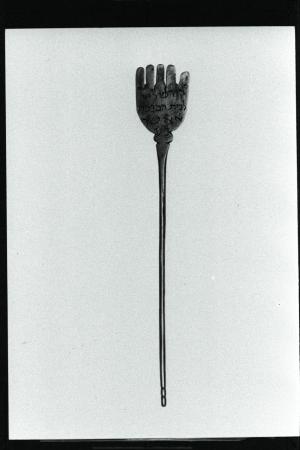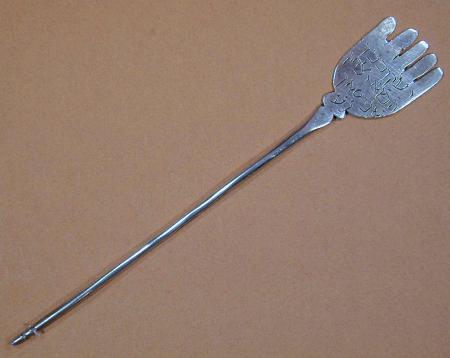Obj. ID: 3988
Sacred and Ritual Objects Torah pointer, Iran, circa 1900

The following description was prepared by William Gross:
The pointer used by the Torah reader to keep the place is known in European communities as the *yad, "hand," or the eẓba, "finger," and in Sephardi and Eastern communities as the moreh, "pointer," or kulmus, "quill," the former because of its function and the latter because of its shape. Halakhic sources also use the terms moreh or kulmus. The pointer was originally a narrow rod, tapered at the pointing end, usually with a hole at the other end through which a ring or chain could be passed to hang the pointer on the Torah scroll.
The original form of the pointer was preserved in Eastern communities, the differences from one community to another being mainly in length and ornamentation. In certain communities a hand with a pointing finger was added, and accordingly the pointer came to be known as a yad, "hand," or eẓba, "finger." Pointers are made for the most part of silver or silver-plated brass, but in a few European communities they used to be made of wood. In such cases the pointers were carved in the local folk-art style.
Torah pointers in the Iranian community come in a variety of shapes and sizes. But this example in the form of a hamsa as the pointing hand is typical of a small, most interesting group. The inscription is on both sides of the hand connected to a think holding handle.
Inscription: Dedicated to the Lord and to the synagogue (for) my father, in great peace may he rest in Eden, Ya’akov, son of the great teacher and father Yitzhak Anisan(?), may he rest in Eden







